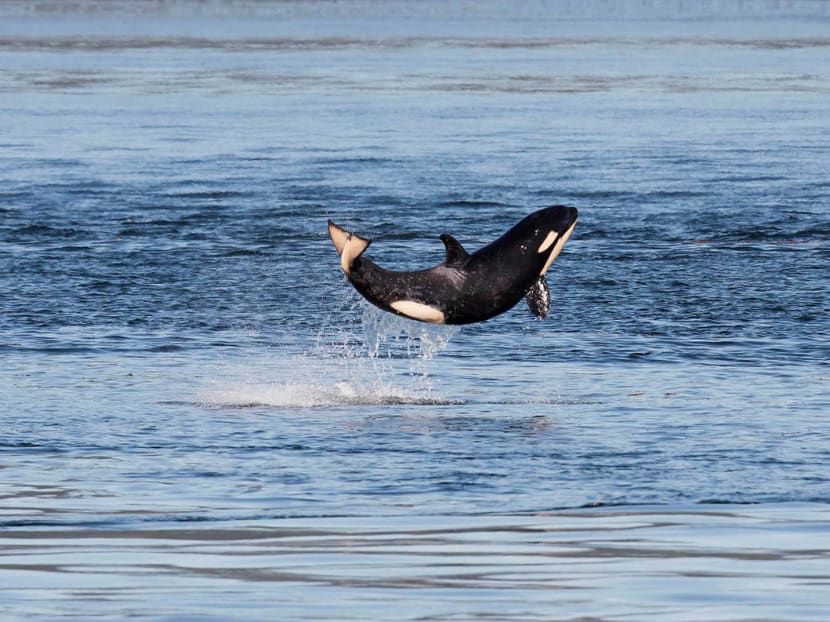81 whales, including four babies: Official orca census
SEATTLE — The annual July tally of endangered orcas is complete, and researchers have counted 81 whales, including four babies born since last winter.

In this July 5, 2015 photo provided by the Pacific Whale Watch Association (PWWA), a baby orca leaps out of the waters of Haro Strait between islands in British Columbia and Washington. Photo: AP
SEATTLE — The annual July tally of endangered orcas is complete, and researchers have counted 81 whales, including four babies born since last winter.
Researchers tracking the southern resident killer whales have photo confirmation of each whale and nobody is missing, said Dr Ken Balcomb, a senior scientist with the Centre for Whale Research who keeps the official census of Puget Sound killer whales for the federal government. “They’re all here.”
The orcas that frequent the inland Washington waters are identified by unique black and white markings or variations in their fin shapes.
It is good news that the four baby orcas — one female and three males — have survived so far, Dr Balcomb said.
“We’re excited. They passed the dangerous part,” he said. The survival rate for babies is about 50 per cent.
“We’re not in the clear yet. They’ll be weaning in a year. They have to make it there and have to learn how to eat and have to have food to eat. But we’re upbeat,” he added.
The population of 81 orcas is higher than last July’s count of 78 whales. But it is still low. Listed as endangered in 2005, the whales are struggling because of pollution, lack of food and other reasons.
The whales have been sticking to the Strait of Juan de Fuca west of Port Angeles, Dr Balcomb said.
Crews from the Pacific Whale Watch Association have photographed the babies swimming and jumping out of the water and report that they appear to be healthy.
Dr Balcomb sent his census report to the National Oceanic and Atmospheric Administration earlier this week. They will also count the whales again later this year. AP





